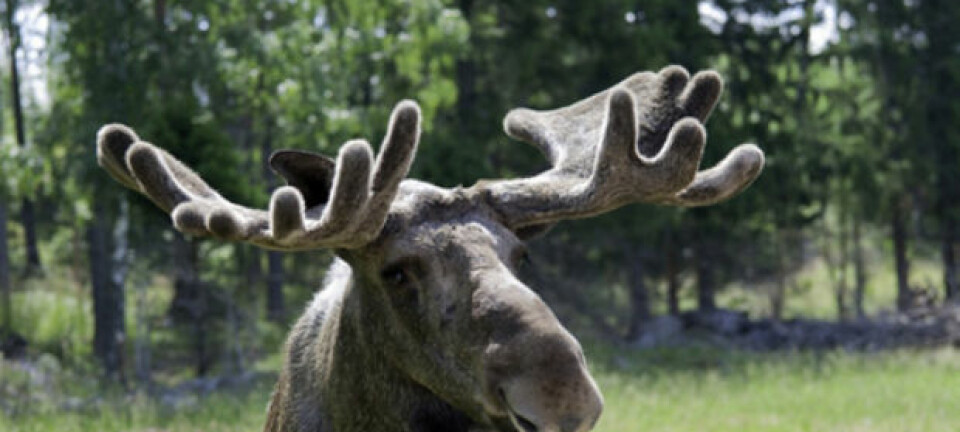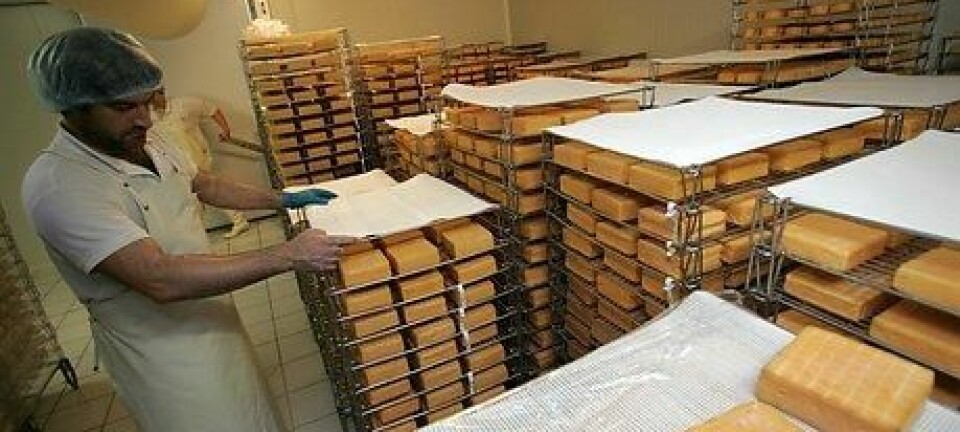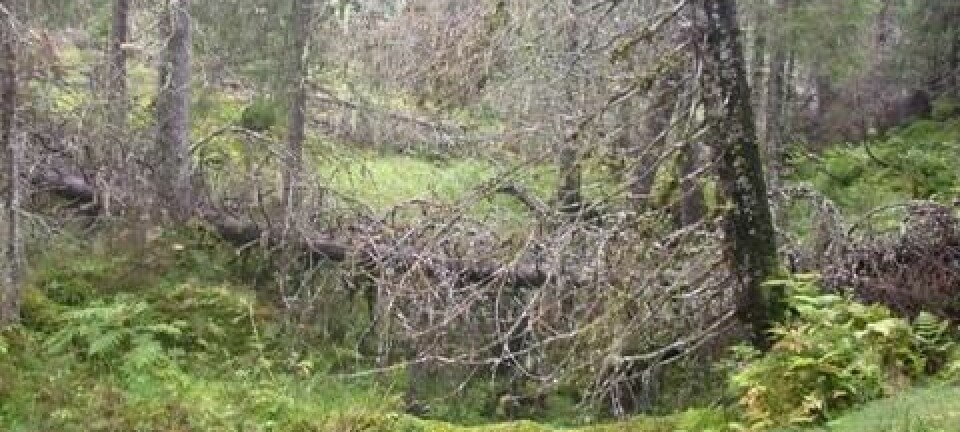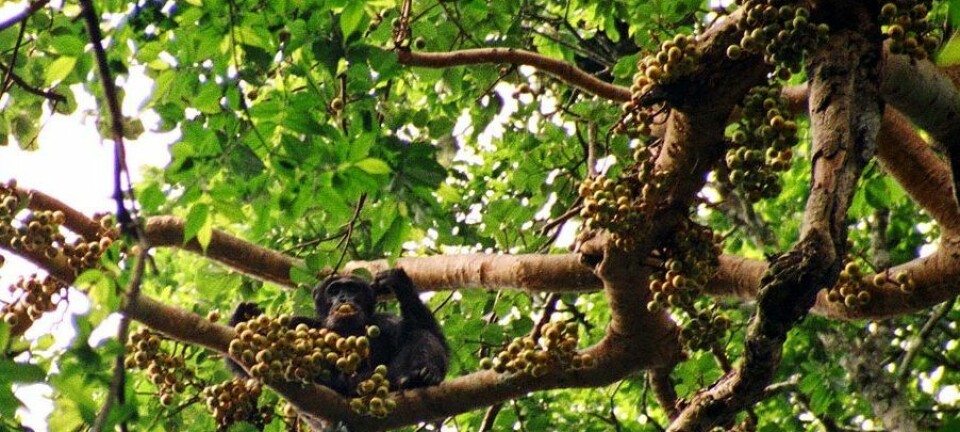
What’s a moose to eat?
Moose like to browse on young saplings. Forest owners count on their trees for timber. Researchers are looking for better ways to meet both needs.
Denne artikkelen er over ti år gammel og kan inneholde utdatert informasjon.
Silage is grass that is fermented to keep longer and be eaten throughout the winter, and it is used primarily as feed for cattle and other ruminants.
Often moose are fed silage to reduce browsing damage in forests in Norway and Sweden. “But the solution isn’t that simple,” says Karen Marie Mathisen at Hedmark University College. She is researching forests and moose around Evenstad in Hedmark county’s Stor-Elvdal municipality.
Silage versus natural feeding
“Silage feeding has been used in this region for over 20 years, but browsing damage has increased even though the area has been loaded with silage bales,” she says.
Mathisen received her doctorate for how moose browsing affects biodiversity, and she is now working on a project that uses natural feed to prevent timber reproduction damage. According to forest owners, moose cause NOK one billion of forest damage in Norway every year.
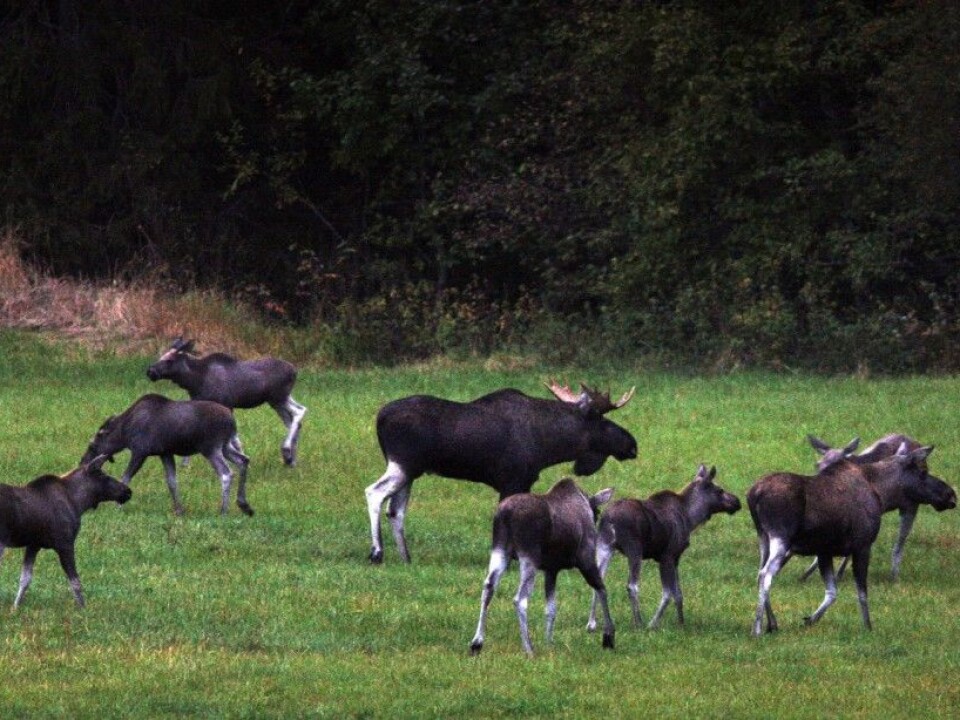
Deciduous trees and leftover tops from logging are examples of natural feed. Pine tops that are too high for the moose to reach rate as preferred browse after trees are harvested.
Moose care less for spruce twigs, so damage to these trees is relatively rare.
Pine trees produce defence substances that make them less tasty and delay moose digestion. But these substances are not needed when the tree is higher than five meters, and the top is well out of a moose’s reach.
Another reason that moose love leftover pine tops, says Mathisen, is that they have incisor teeth only in their lower jaw. Their food has to be attached to a tree or otherwise stuck or frozen so they can cut and break the branches with their sharp lower incisors and prehensile upper lip.
Untapped food source

Moose will take advantage of newly logged areas when new treetops and browse are available.
“This is a huge amount of untapped biomass that is usually crushed or used as underlay for the harvesting equipment. If trees are cut in the winter, the heavy equipment tracks are less of a problem, and it’s easier to provide the moose with the logging leftovers,” Mathisen says.
Researchers are experimenting with increasing the amount of moose forage in larger areas and comparing the browsing damage with areas using regular forestry practices.
Lining up for dinner
Game cameras show that moose eat the feed that is set out in the winter. How much depends on the snow depth where logging treetops are available and on moose migration patterns. It also confirms that logging waste is better utilized when harvesting is done in early winter.
According to Mathisen, better utilization when there's snow around may indicate that the moose migrate to the logging areas when less natural browse is available. “But we’ve also observed that moose come to the area even before logging jobs are finished. Logging equipment operators see moose standing there, waiting for the food to be served. Moose have learned that the sound of logging equipment means fresh, fine pine shoots,” she says.
More moose, less food
Changes in agricultural practices are resulting in less moose feed than previously. More moose and limited young growth forest also mean less available food.
Many regions have managed moose without thinking of how much forage is available. The degree of damage varies from area to area, so simply increasing the number of moose taken by hunting doesn’t solve the problem, she says.
Diversify the forage
Planting more deciduous trees between the pines is another measure to reduce grazing damage. If forest owners work together so that individual woodlots are not singled out and damaged more by moose, this collaborative strategy could provide more food for moose, which in turn would lead to fewer damaged pine trees.
Mathisen also recommends that forest owners cut above the lowest branches rather than at ground level when they log. Moose prefer trees that have already been browsed, because they send out larger and more nutritious shoots at grazing height. Cutting higher up will attract moose to the logged trees rather than to the young timber stand.
Multiple approaches
But scientists are not giving up on silage feeding. Associate Professor Simen Pedersen at Hedmark University College wonders how feed silage quality could be improved.
“Silage is sometimes mouldy,” he says. “And by testing out various silage crops, such as mixed greens or oats and peas, we can see what moose might prefer that tastes better than grass.”
Pedersen is crafting a package of multiple measures that may reduce grazing damage. Fencing in young forests for five to ten years would allow the trees to grow large enough so that the moose could not eat their tops. But fencing is expensive and it is questionable whether it will pay to do this for a single forest stand.
Growing moose forage along rural roads, by cutting the woods there and simultaneously fertilising, could increase the shoot production, he suggests. Different types of willows and other moose forage can be grown along logging roads. Moose actually prefer willow to pine.
“Moose are also fond of blueberry heaths until they’re covered by snow, and in the spring before other plant growth begins,” says Pedersen.
------------------------------------
Read the Norwegian version of this article at forskning.no







